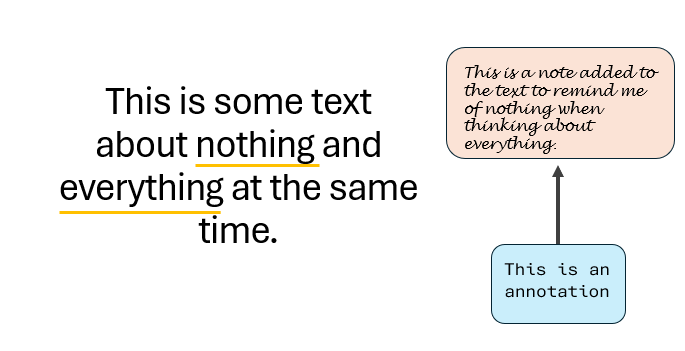This week Dr Remi Kalir from Duke University shared his passion for social annotation in this video. At first, I was unsure what Dr Remi was going to talk about and if there could be much to discuss regarding taking notes or commenting on texts. Luckily as an engaging speaker on this subject, Dr Remi walked us through some deeper thoughts and considerations on how adding notes can connect people and spark different meaningful conversations.

As Dr Remi went through his presentation, I tried to keep up with the technical language used to describe how annotations are implemented. One such term was annotation being “intertextual” meaning how different texts interact with each other. The examples provided helped to view annotation in creative ways such as comments left on art, in public places, or part of signage. These different ways of using annotation display the processes of interruption of meaning and contesting of ideas that help to give a deeper understanding of where you stand on a subject.
A discussion of the use of Hypothes.is highlighted the opportunity to use this digital tool in a learning context for students to share commentary and engage in dialogue through text. Dr Remi emphasized the disconnect between individually annotating a document and then discussing it in a forum separate from the document. Digital tools such as Hypothe.is creating an opportunity for students to take notes collectively and interact with others’ annotations. This tool is a platform to engage in the interruption of meaning and contesting of ideas which will benefit a student’s learning on subjects. I wonder if this was integrated within Uvic’s Brightspace platform how effective it would be to promote engagement with online learners.